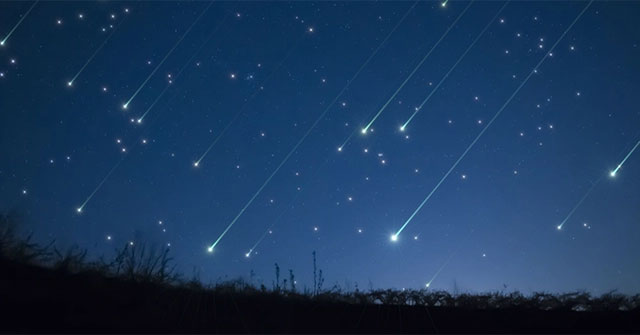
Eta Aquarid Meteor Shower
Get ready for a celestial spectacle as the Eta Aquarid meteor shower graces the skies this May. This medium-strength shower is expected to peak on the night of May 5-6, unleashing up to 60 meteors per hour at its zenith. While observers in the Southern Hemisphere will enjoy the best views, Northern Hemisphere enthusiasts can still catch around 30 meteors per hour. These fiery streaks are remnants of Halley's Comet, a celestial wanderer known to humans since ancient times.
Despite the presence of a nearly full moon obscuring most faint meteors, dedicated skywatchers may still glimpse some breathtaking streaks. For optimal viewing, seek out dark sky locations after midnight and look towards the constellation Aquarius, though meteors may appear from any point in the sky.
May 8 - New Moon
The moon will align directly between Earth and the sun, rendering it invisible in the night sky. This lunar phase, occurring at 10:23 AM (Vietnam time), provides an ideal opportunity to observe faint celestial objects such as galaxies and star clusters unhindered by moonlight.
May 9 - Mercury at Greatest Western Elongation
Mercury will reach its maximum angular distance of 26.4 degrees west of the sun. This optimal viewing period for the planet will see it at its highest point above the horizon in the morning sky. Look for Mercury's low-hanging glow in the eastern sky just before sunrise.
May 23 - Full Moon
The moon, positioned opposite the Earth from the sun, will be fully illuminated. This lunar phase occurs at 8:55 PM (Vietnam time). Native American tribes traditionally named this full moon the Flower Moon, marking the blooming abundance of spring flowers. It is also known as the Corn Moon and the Milk Moon.
